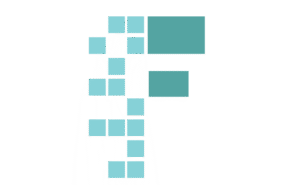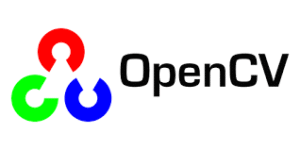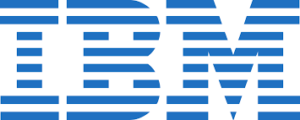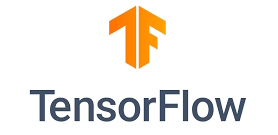Learning computer vision is essential because it equips computers to analyze and understand the digital world as humans do. With computer vision, computers can recognize objects, detect patterns, and make decisions based on visual information, enabling automation, improving efficiency, and enhancing our ability to interact with and interpret the world. Applications like image classification, object detection, visual tracking, and image segmentation are transforming industries, from healthcare and autonomous driving to creative arts and security. The following courses offer diverse pathways to master computer vision, catering to beginners and advanced learners alike. Whether you’re seeking practical coding skills, theoretical depth, or creative applications, these programs provide hands-on experience with tools like Python, TensorFlow, and PyTorch. Designed by leading institutions and experts, they empower learners to build intelligent vision systems and contribute to cutting-edge AI innovations. Explore these courses to unlock the potential of computer vision and shape the future of technology.

Applying Computer Vision Skills in Industry: AI Superior’s Innovative Solutions
AI Superior – an AI services company, stands out as a leader in applying advanced computer vision techniques to solve real-world business challenges. Drawing from cutting-edge methods taught in leading professional courses – such as deep learning with convolutional neural networks, image segmentation, and real-time object detection – we empower organizations to turn raw visual data into meaningful insights.
One example is our drone-based inspection platform, developed for a city municipality, which uses object detection models similar to YOLO to identify 25 types of construction debris. This system cut monthly inspection costs by 40% and saved over 320 man-hours. In another case, our OCR solution – built using state-of-the-art image processing algorithms – reduced manual data entry errors by half, significantly improving workflow efficiency.
AI Superior don’t just build AI solutions – we apply the same algorithms taught in world-class courses like Stanford’s CS231n or Coursera’s advanced computer vision with TensorFlow, but in highly customized, real-world contexts. Our projects span industries like construction, healthcare, and energy, helping businesses automate labor-intensive processes, enhance accuracy, and make smarter, data-driven decisions.
Backed by a team of PhD-level data scientists and AI engineers, we helps organizations harness the full power of computer vision to drive innovation, reduce costs, and stay competitive in a data-driven world.

1. Deep Learning Specialization
The Deep Learning Specialization, offered by DeepLearning.AI on Coursera, provides a comprehensive foundation in deep learning, with a dedicated course on computer vision applications. The fourth course focuses on convolutional neural networks (CNNs), teaching learners to build and apply them for tasks like object detection, face recognition, and neural style transfer, with applications in autonomous driving and medical imaging. Students implement CNN layers, such as pooling and convolutions, and explore advanced architectures like residual networks using TensorFlow. Rated 4.9/5 by over 120,000 learners, it emphasizes practical skills through hands-on projects and transfer learning techniques drawn from research papers. The specialization suits intermediate learners with basic programming and math knowledge, requiring 3-6 months at 10 hours per week. By the end, participants can build neural networks for real-world vision tasks, enhancing career prospects in AI. The course also covers optimization techniques like dropout and batch normalization to improve model performance.
- Platform: Coursera (by Andrew Ng, Deeplearning.ai)
- Level: Intermediate
- Focus: Covers convolutional neural networks (CNNs) and their applications in image recognition, segmentation, and other computer vision tasks.
- Good for: Those looking to dive deeper into deep learning and its specific application to computer vision.

2. Computer Vision Specialization
The Computer Vision Specialization, offered by the University of Colorado Boulder on Coursera, introduces learners to both classical and deep learning-based computer vision techniques. It covers convolution operations, linear filters, and neural network-based image classification, contrasting traditional methods with modern CNN approaches. Students gain hands-on experience building and training neural networks in TensorFlow for tasks like object recognition and image classification. The specialization is designed for beginners and intermediate learners, requiring basic programming skills, and spans multiple courses with flexible pacing. Practical exercises focus on real-world applications, such as facial recognition and augmented reality, though some learners note the exercises may be relatively simple. Graduates can earn graduate-level credit toward CU Boulder’s MS in Computer Science or Data Science programs. The course emphasizes practical skills for developing vision systems, making it ideal for those entering the field.
- Platform: Coursera
- Level: Beginner to Intermediate
- Focus: A comprehensive series covering image formation, feature extraction, segmentation, and object recognition using Python and OpenCV.
- Good for: Beginners who want a well-rounded introduction to computer vision with hands-on projects.
3. Computer Vision Nanodegree
Udacity’s Computer Vision Nanodegree, led by expert Cezanne Camacho, equips learners with hands-on skills to analyze and process images using Python, PyTorch, and deep learning. Over three months (10-15 hours/week), students master image processing, CNNs, and feature extraction, building projects like facial keypoint detection and automatic image captioning with CNN-RNN combinations. The curriculum covers edge detection, image segmentation with k-means clustering, and advanced architectures like Faster R-CNN and YOLO for object recognition. Designed for those with intermediate Python and machine learning knowledge, it includes access to AWS GPUs for faster model training. Real-world projects, such as facial keypoint detection, prepare learners for careers in robotics and automation. The program’s practical focus and expert instruction make it ideal for aspiring computer vision professionals.
- Platform: Udacity
- Level: Intermediate to Advanced
- Focus: Hands-on projects that tackle real-world problems like facial keypoint detection, object tracking, and image captioning, using deep learning techniques.
- Good for: Those who want to build a portfolio with real-world applications and advance their skills in computer vision.

4. Practical Deep Learning for Coders
Practical Deep Learning for Coders by Fast.ai is a free, 7-week course designed for coders with at least one year of programming experience and basic high-school math knowledge. It focuses on building and applying deep learning models for computer vision using PyTorch, covering image classification, transfer learning, and text classification with CNNs and RNNs. Students work on real-world problems, such as classifying images or analyzing tabular data, with an emphasis on practical implementation over theoretical details. The course, taught by Jeremy Howard and Rachel Thomas, is accessible online and encourages hands-on model building. Its fast-paced, code-first approach suits self-motivated learners aiming to quickly apply deep learning to vision tasks. By the end, participants can create vision models for applications like recommendation systems or object recognition.
- Platform: Fast.ai (Free)
- Level: Intermediate
- Focus: Teaches deep learning techniques with practical applications in computer vision. The course uses real-world datasets and helps build models quickly.
- Good for: Learners looking for a hands-on approach to deep learning with minimal upfront math.
5. CS50’s Introduction to AI with Python
CS50’s Introduction to AI with Python, offered by Harvard University on edX, is an introductory course exploring AI concepts, including computer vision, through Python programming. Students learn machine learning techniques like classification and optimization, applying them to vision tasks such as handwriting recognition. The course includes hands-on projects using Python libraries, covering graph search algorithms and reinforcement learning, with vision as a key application area. Designed for learners with basic programming knowledge, it spans 7-10 weeks at 10-30 hours per week and offers free auditing or a paid certificate. Taught by Harvard faculty, it emphasizes computational thinking and real-world problem-solving. By completion, students can design intelligent systems, including vision-based applications, preparing them for further AI studies. The course’s accessibility and prestigious branding make it ideal for beginners.
- Platform: edX (Harvard University)
- Level: Beginner to Intermediate
- Focus: An introduction to AI with Python, including practical projects in computer vision using OpenCV and neural networks.
- Good for: Beginners interested in both AI and computer vision, especially those who want a broad understanding of AI techniques.

6. Convolutional Neural Networks for Visual Recognition
Stanford’s CS231n: Convolutional Neural Networks for Visual Recognition, available via YouTube and Stanford Online, is a rigorous 10-week course led by experts like Fei-Fei Li. It dives into CNN architectures for image classification, teaching students to implement, train, and debug neural networks for tasks like object recognition on datasets like ImageNet. The course covers backpropagation, advanced architectures (e.g., ResNets), and practical engineering tricks, with a final project training a multi-million-parameter CNN. Aimed at learners with programming (Python) and linear algebra knowledge, it emphasizes end-to-end model development for real-world applications like self-driving cars. Free lecture videos and assignments make it accessible, though self-paced study requires discipline. Graduates gain expertise in state-of-the-art vision systems, valued by industry leaders like Tesla’s Andrej Karpathy.
- Platform: Stanford Online / YouTube
- Level: Intermediate to Advanced
- Focus: A deep dive into convolutional neural networks and their application to visual recognition tasks like image classification, object detection, and segmentation.
- Good for: Advanced learners with a strong foundation in machine learning and deep learning, looking to explore cutting-edge computer vision techniques.

7. Creative Applications of Deep Learning with TensorFlow
Creative Applications of Deep Learning with TensorFlow, offered by Kadenze, explores innovative uses of deep learning in computer vision, focusing on artistic and creative applications. Students learn to build neural networks with TensorFlow for tasks like neural style transfer, image generation, and visual synthesis, applying CNNs to create art or enhance images. The course covers data preprocessing, model training, and visualization techniques, emphasizing practical projects over theoretical depth. Designed for intermediate learners with basic Python and machine learning knowledge, it typically spans 5-7 weeks with flexible pacing. It suits creatives and technologists interested in blending AI with art, such as generating novel visuals or music. By the end, participants can develop vision-based creative tools, opening doors to interdisciplinary AI applications.
- Platform: Kadenze
- Level: Beginner to Intermediate
- Focus: Explores the intersection of deep learning and creative applications, such as generative art and interactive design, with a focus on TensorFlow.
- Good for: Creative professionals and artists looking to use AI and computer vision in design projects.

8. Computer Vision Basics
Computer Vision Basics, offered by University at Buffalo on edX, introduces fundamental concepts of computer vision for beginners with minimal programming experience. The course covers image processing, feature detection, and basic classification, using Python and OpenCV to analyze images and extract information. Students explore applications like facial recognition and motion detection through guided projects, gaining practical skills in a 4-6 week timeframe. It emphasizes real-world uses, such as medical imaging and autonomous systems, while introducing ethical considerations like bias in vision models. Free to audit, with a paid certificate option, it’s ideal for those new to AI or seeking a quick entry into vision tasks. By completion, learners can perform basic image analysis and understand the foundations of advanced vision techniques.
- Platform: edX
- Level: Beginner
- Focus: Fundamentals of computer vision and image processing, including edge detection, object recognition, and real-world applications like robotics.
- Good for: Learners who are new to computer vision and want a structured, academic introduction with practical examples.

9. Computer Vision with OpenCV Python
The Computer Vision with OpenCV Python | Official OpenCV Course on Udemy, endorsed by the OpenCV team, teaches learners to build computer vision applications using Python and the OpenCV library. Students explore core techniques like image processing, feature detection, and object tracking, implementing projects such as real-time video analysis and face detection. The course covers practical skills, including edge detection, image filtering, and contour analysis, with hands-on coding in Python. Aimed at beginners with basic Python knowledge, it spans approximately 10-15 hours of self-paced content, making it accessible for busy learners. Real-world applications include robotics, surveillance, and augmented reality, aligning with industry needs. By completion, participants can develop robust vision systems and earn a certificate to enhance their professional portfolio.
- Platform: Udemy
- Level: Beginner to Intermediate
- Focus: Teaches computer vision using Python and OpenCV, one of the most popular libraries in the field. You’ll learn how to process images, detect shapes, work with videos, and build mini-projects like face detectors.
- Good for: Beginners who want a hands-on, project-based introduction using tools used in real-world applications.

10. Fundamentals of Google AI for Web Based Machine Learning
Fundamentals of Google AI for Web Based Machine Learning on edX, offered by Google, introduces AI and machine learning with a focus on web-based computer vision using TensorFlow.js . The course begins with Google AI for Anyone, covering AI basics and real-world applications like image recognition, requiring no prior coding experience. The second course, Google AI for JavaScript Developers with TensorFlow.js, teaches learners with basic JavaScript, HTML, and CSS skills to build vision models, such as object detection, using pre-made or custom models like CNNs . Students learn to convert Python models to TensorFlow.js for client-side web apps, enabling tasks like real-time image classification. Aimed at beginners and web developers, it offers flexible pacing and a professional certificate. By completion, participants can create intelligent web applications with vision capabilities, leveraging JavaScript’s ubiquity.
- Platform: edX (offered by Google)
- Level: Beginner
- Focus: Introduces the basics of using Google’s AI tools, with a focus on web-based machine learning and computer vision applications using TensorFlow.js. Learn how to build and deploy AI-powered apps directly in the browser.
- Good for: Beginners or web developers who want to explore how computer vision and machine learning can be integrated into interactive web apps.

11. Introduction to Computer Vision and Image Processing
Introduction to Computer Vision and Image Processing on Coursera, offered by IBM, provides a beginner-friendly entry into computer vision fundamentals. Students learn image processing techniques, such as filtering and edge detection, and basic neural network-based classification using Python and OpenCV. The course includes hands-on labs to build vision applications, like image classification and object detection, with applications in retail and healthcare. Designed for those with minimal programming experience, it takes 4-6 weeks at 3-5 hours per week and offers a shareable certificate. Learners explore both classical and deep learning approaches, gaining insights into real-world vision challenges. By the end, participants can preprocess images and build simple vision models, laying a foundation for advanced AI studies.
- Platform: Coursera (offered by IBM)
- Level: Beginner
- Focus: A beginner-friendly course that explains the basics of image processing, object recognition, filtering, and more – while introducing OpenCV and Python through hands-on labs.
- Good for: Those new to the field and looking for a clear, structured way to get started with real-world examples.

12. Advanced Computer Vision with TensorFlow
Advanced Computer Vision with TensorFlow, offered by DeepLearning.AI on Coursera, dives into sophisticated computer vision techniques using TensorFlow for intermediate to advanced learners. Students master object detection, image segmentation, and visualization with models like SSD and U-Net, implementing projects such as multi-class object detection. The course covers transfer learning, attention mechanisms, and cloud-based model training, addressing real-world challenges like autonomous systems and medical diagnostics. Requiring prior deep learning knowledge, it spans 4 weeks at 5-7 hours per week, offering a certificate upon completion. Learners gain hands-on experience with TensorFlow’s Keras API and explore ethical considerations in vision applications. By the end, participants can build and deploy complex vision models, enhancing their expertise in AI development.
- Platform: Coursera (part of the TensorFlow Developer Certificate)
- Level: Intermediate to Advanced
- Focus: Focuses on building and training custom models for tasks like image classification, object detection, and image augmentation using TensorFlow.
- Good for: Developers who already know Python and basic deep learning concepts and want to level up their skills with TensorFlow.
Conclusion
The field of computer vision is revolutionizing how machines perceive and interact with the world, making it a critical skill for aspiring AI professionals and innovators. The courses outlined – ranging from introductory basics to advanced deep learning applications – offer comprehensive pathways to mastering techniques like object detection, image segmentation, and visual tracking. By leveraging tools such as Python, TensorFlow, and PyTorch, these programs equip learners with practical and theoretical skills applicable across industries like healthcare, autonomous systems, and creative arts. Whether you’re a beginner exploring image processing or an experienced coder tackling convolutional neural networks, these courses provide flexible, high-quality education from top institutions. Engaging with these programs not only builds technical expertise but also fosters the ability to address real-world challenges through intelligent vision systems. Embrace these opportunities to contribute to the future of AI and harness the transformative power of computer vision.
